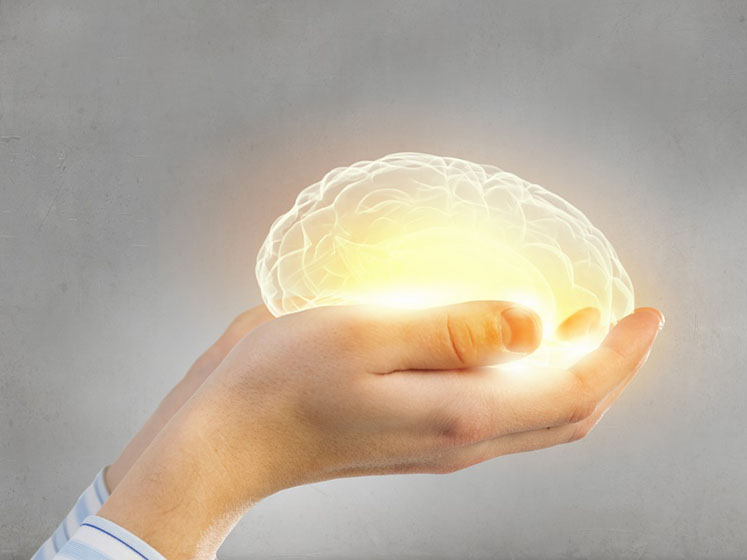Considering the hurdles innovators face when marketing a product in the EU and UK, this article also provides an overview of how patent protection contributes to commercialising the sector’s innovations and offers some tips for maximising intellectual property (IP) protection.
What are nootropics?
The term “nootropic” was first reportedly used in 1972 by Corneliu E. Giurgea, a psychologist and chemist, to describe a broad category of nutraceuticals and pharmaceuticals offering cognitive function benefits.
Caffeine is, of course, the most ubiquitous of the nootropics, but there are numerous other examples that consumers will ingest on a regular basis, such as L-theanine (found in black and green tea), anthocyanins (found in blackberries), nicotine and creatine.
According to Research and Markets, the global nutraceutical market (covering functional foods, functional beverages and dietary supplements) is estimated to be worth at $330.6 billion in 2022 and is projected to reach $441.7 billion by 2026, growing at a CAGR of 7.8% during that period.
Against that backdrop of significant growth, the Nootropics Global Market Report 2022 recently issued by Research and Markets reports that the global nootropics market is expected to grow from $3.36 billion in 2021 to $3.95 billion in 2022 at a CAGR of 17.5% and is expected to grow to $6.61 billion in 2026 at a CAGR of 13.7%.1
The increasing popularity of nutraceuticals — and particularly the nootropic variety — appears to reflect consumers taking a more active approach to their health and well-being as a consequence of evolving lifestyle choices, increased health awareness and a shift toward a preventive healthcare paradigm.

Why so popular?
Nootropics have established a wide and cross-generational appeal as individuals seek to “biohack” their cognitive function with supplements and functional foods for different reasons. eSports professionals and competitive gamers are increasingly using nootropics to improve their performance.
Nootropic products containing bonded arginine silicate (ASI) and inositol have, for instance, been found to improve the ability to perform complex cognitive tests in one study, whereas a second showed significantly improved cognitive function prior to and following a one-hour gaming challenge.
This has since been verified in a further follow up study.2 According to PwC’s Global Entertainment and Media Outlook 2022-26, the global gaming industry is expected to be worth $321 billion by 2026 and it seems likely that the nootropics industry will also capitalise on its growing popularity.3
However, it’s not just gamers that have been increasingly turning to nootropic supplements; there is a growing use of nootropics in sports nutrition by athletes, particularly those involved with team games requiring swift decision making, motor control, co-ordination and timing. Nootropic sports drinks formulated with herbal nootropics already exist and are marketed as helping to improve focus as well as energy levels.
It’s perhaps not surprising, then, that nootropics are also being marketed towards working professionals wanting to be more productive and stay focused at their desks, as well as older generations wishing to retain mental acuity and stave off any feeling of cognitive decline.
Innovation driving popularity
Another notable reason for the increasing popularity of nootropics is that they’re becoming more convenient, and more appetising, to consume. Like many supplement products, nootropics are readily available in the form of adult chewable gummies (and in a variety of flavours) for those who have “pill fatigue.”
In addition, nootropics are becoming increasingly prevalent in functional foods and beverages that can integrate more readily into people’s existing routine.
For example, there are nootropic snack/protein bars, performance drinks, stimulant-free functional beverages and even adaptogenic coffee blends. The extent to which nootropic products have extended into the public realm is perhaps well illustrated by the unveiling of a nootropics cocktail bar in London in April 2022; serving nootropic cocktails (alcoholic and non-alcoholic options available), it allows patrons to load up on nootropics whilst enjoying a night out.
The growth of personalised/individualised healthcare has also infiltrated the nootropics sector. Nootropics innovators have started offering personalised/individualised nootropic formulations —determined by proprietary algorithms — that take consumer’s responses to lifestyle questionnaires and convert them into a tailored formulation (or stack) of nootropics that is considered to be of most benefit to the user.
Protecting innovation
Unsurprisingly, the nootropics market is a hotbed of innovation as companies fight to distinguish their products from those of their competitors and capitalise on the shift in consumer trends. Branding and marketing strategy will, of course, play a significant role in the commercial success of such products, but it is also the case that innovators are recognising the value in protecting their innovations through patents.
New European patent applications in the “food chemistry” category increased by 6.1% in 2021 compared with the previous year, suggesting that the innovation seen in the sector is translating to increased numbers of patent filings year on year.4
As with other food chemistry products, there are numerous options to protect the technical innovation underpinning nootropic products through patents. For instance, protecting a new composition or formulation of ingredients (including, for example, a synergistic stack of actives), and uses thereof, is often the most desirable protection sought by applicants.
For example, Brain Health Holding LLC recently received a granted patent (US 11,357,810 B1) in the US with claims directed to a synergistic combination of purified Bombyx mori cocoon silk peptide fibre, refined Buglossoides arvensis seed oil and a blueberry extract, as well as a method of using the same for improving cognitive performance.

Alphagen NZ Ltd also has pending patent applications (deriving from WO 2019/098858 A1) directed to a composition comprising at least two pine bark extracts containing proanthocyanidins: a berry fruit extract containing anthocyanins and/or a source of L-theanine, as well as to methods to improve mental clarity.
Nutrition 21 LLC has also received granted patents directed to an inositol-stabilised arginine silicate composition for use in treating a cognitive disorder, as well as use of the same in a non-therapeutic method to improve cognitive function.
There are also numerous other patent-protectable innovations relating to improvements in product bioavailability, organoleptics, shelf-life or to overcome the challenges relating to consumer preferences (sustainably sourced, vegan, etc.).
There are also patentable innovations relating to extraction techniques and processing methods — particularly regarding high purity or highly active concentrations, as well as new uses of known nutraceuticals that innovators may seek to protect.
Use claims (patents) at the EPO: where things can get more complicated
Patenting nootropic products, or indeed any form of nutraceutical product, does not come without its challenges. The European Patent Office (EPO) does not, for instance, distinguish between a pharmaceutical product or a nutraceutical product (such as a functional food with a purported health benefit), which can be problematic when it comes to claiming the use of a nootropic product.
The EPO does not allow claims for methods to treat the human or animal body by surgery or therapy … and many readers will know that claims relating to a medical use must be formulated in a specific manner (as a purpose-limited product claim: “compound X for use in treating disorder Y”) to avoid such exclusions to patentability at the EPO.
Nutraceutical products that might have a health benefit can fall into a grey area wherein they might not be intended for the treatment of a particular disease, but a claim to their use might be considered to constitute a method of treatment and, as a consequence, fall foul of the exclusions.
Non-therapeutic/cosmetic method claims are allowable at the EPO (for example: “a non-therapeutic method of improving cognitive performance in a subject comprising administering compound X”). However, the non-therapeutic use must not be “inseparably associated” or “inextricably linked” with a therapeutic use, which is not always clear.
Some cosmetic methods, for instance, can also help to prevent disease (prophylaxis). In EPO Board of Appeal decision T 290/86, a cosmetic treatment relating to the removal of plaque from teeth was not considered allowable as this method was also considered to have a therapeutic effect (preventing tooth decay).
One can then imagine how there might be confusion if, for instance, a nootropic product may improve cognitive performance in a healthy subject but may have a therapeutic effect in a subject with a cognitive disorder.
Helpfully, a relatively recent EPO Board of Appeal decision — T 1916/19 — has clarified that a non-therapeutic method is allowable, so long as there are “realisations” of the claimed method that are purely non-therapeutic (for example, in the case of a healthy individual who derives only a cosmetic/non-therapeutic benefit).
This aligns with an earlier decision that found it to be allowable to claim both a medical use (in the form of a purpose limited product claim) as well as a cosmetic use in the same patent (EPO Board of Appeal decision: T36/83).
Thus, in the case of the EPO, it seems that there are signs of a permissive approach to the assessment of non-therapeutic method claims, which is likely to be particularly welcome to nootropics innovators and the nutraceutical sector more widely.
Health claims (labelling) in Europe
Innovators in the nutraceutical sector must also navigate EU and UK regulation when seeking to market their innovative products. EU Regulation 1169/2011 (food labelling) and equivalent UK regulation prohibits the labelling of foods with assertions that they prevent, treat or cure human diseases, which is understandable as they do not go through the same regulatory approval as new medicinal products.
However, the regulation does allow assertions that a foodstuff “reduces the risk” of disease, provided it is listed on the EC Register of acceptable health claims.
EU Directive 2002/46/E also provides a list of permitted vitamins and minerals (and corresponding permitted forms thereof) that may be included in a food supplement; otherwise, innovators must apply through the European Food Safety Authority (EFSA) to have a new nutrient source added to the list.
So, if a nooptropic product or another type of nutraceutical cannot be marketed in the EU or UK as being useful to prevent or treat a human disease, how much value is there in granted patent claims directed to a medical use of a nutraceutical product?

The answer to that is not so straightforward, but it certainly means that applicants should consider ways to maximise the benefit of such claims, for instance by mirroring the allowable labelling language by referring to “reducing the risk of a disease” in the patent claim itself (such as “nootropic X for use in preventing or reducing the risk of cognitive disorder Y”).
Readers might then wonder whether the “reducing the risk” language blurs the line between a claim for the medical use and a non-therapeutic method claim, particularly when both appear to be directed to a healthy subject who might simply take the nutraceutical product for a different reason (for example, to lower the risk of a cognitive disease or to obtain an improvement in cognitive function).
Nevertheless, it seems that decision T 1916/19 is still helpful in as much as it identifies that: “there are realisations of the claimed methods that are of a non-therapeutic nature, others that are of a therapeutic nature and others that may be mixed,” but still considers the non-therapeutic method allowable — provided there are at least some realisations of the method that are clearly non-therapeutic.
Summary
The nootropics sector is a particularly fast-growing branch of the nutraceuticals market that seems set to cement itself in the public consciousness in the future … if it hasn’t already.
It’s clear that nootropics have a wide appeal to consumers and the innovations in the sector continue to mean that there are more and more options available for consumers to integrate nootropic products into their routine — and inevitably more options to biohack in a personalised/individualised fashion depending on individual preferences.
Although there are certain hurdles for innovators to market such products, it’s apparent that they can enjoy the full remit of patent protection for new launches in the sector, at least as far as Europe and the UK are concerned.
References
- www.researchandmarkets.com/reports/5623799/nootropics-global-market-report-2022.
- www.mdpi.com/2072-6643/13/11/3758.
- www.pwc.com/gx/en/industries/tmt/media/outlook/outlook-perspectives.html.
- www.epo.org/about-us/annual-reports-statistics/statistics/2021/statistics/patent-applications.html#tab3.
